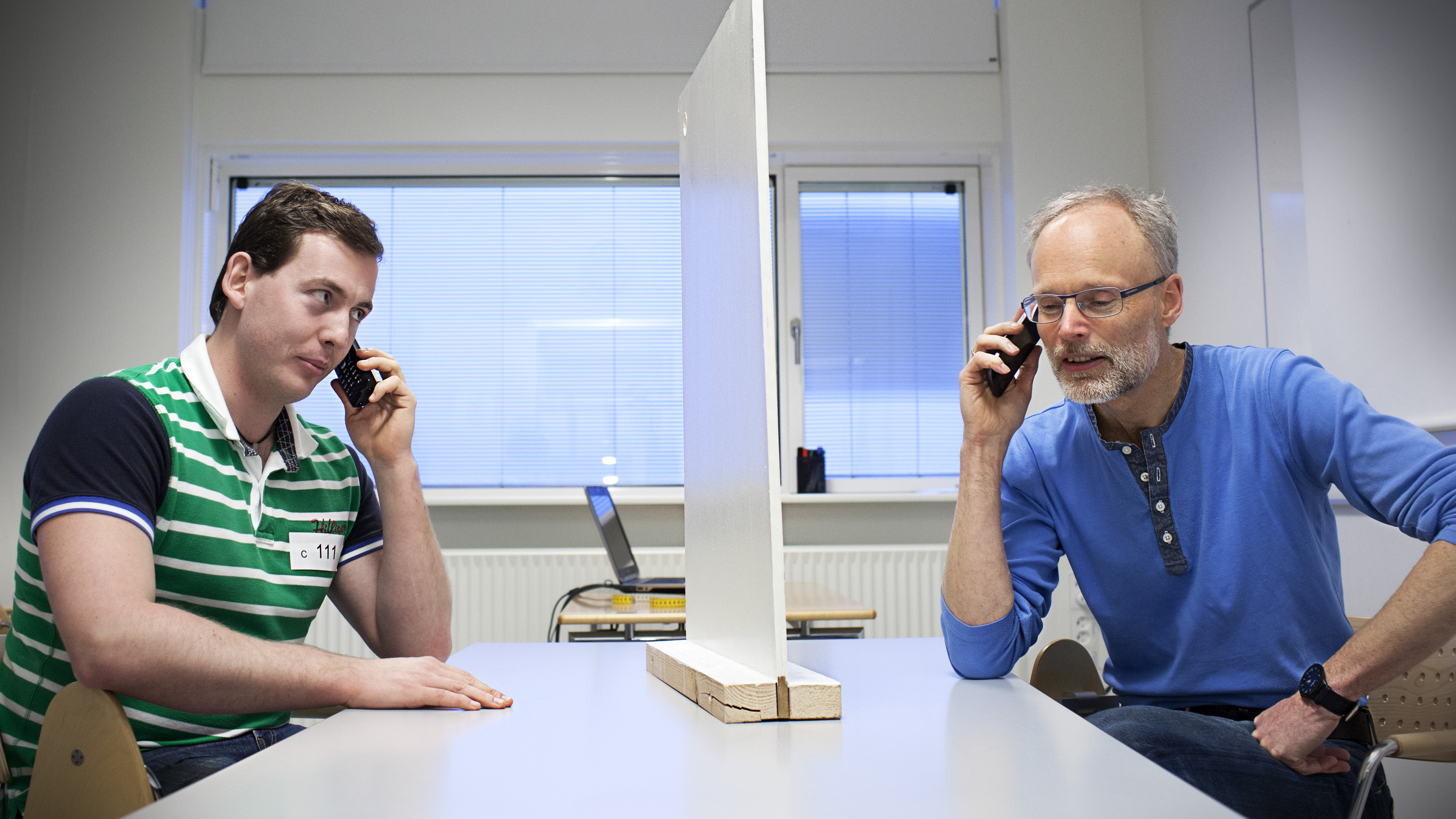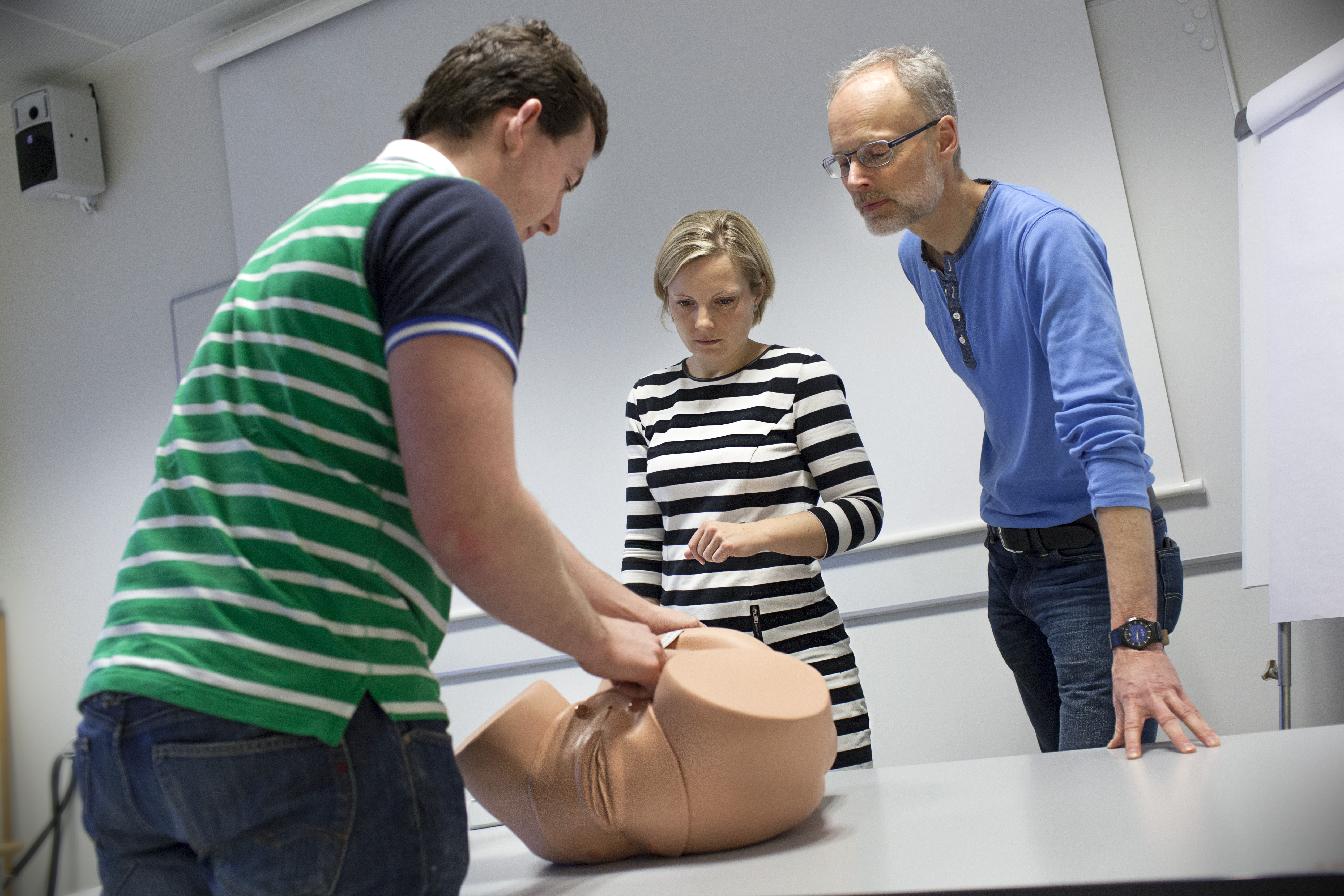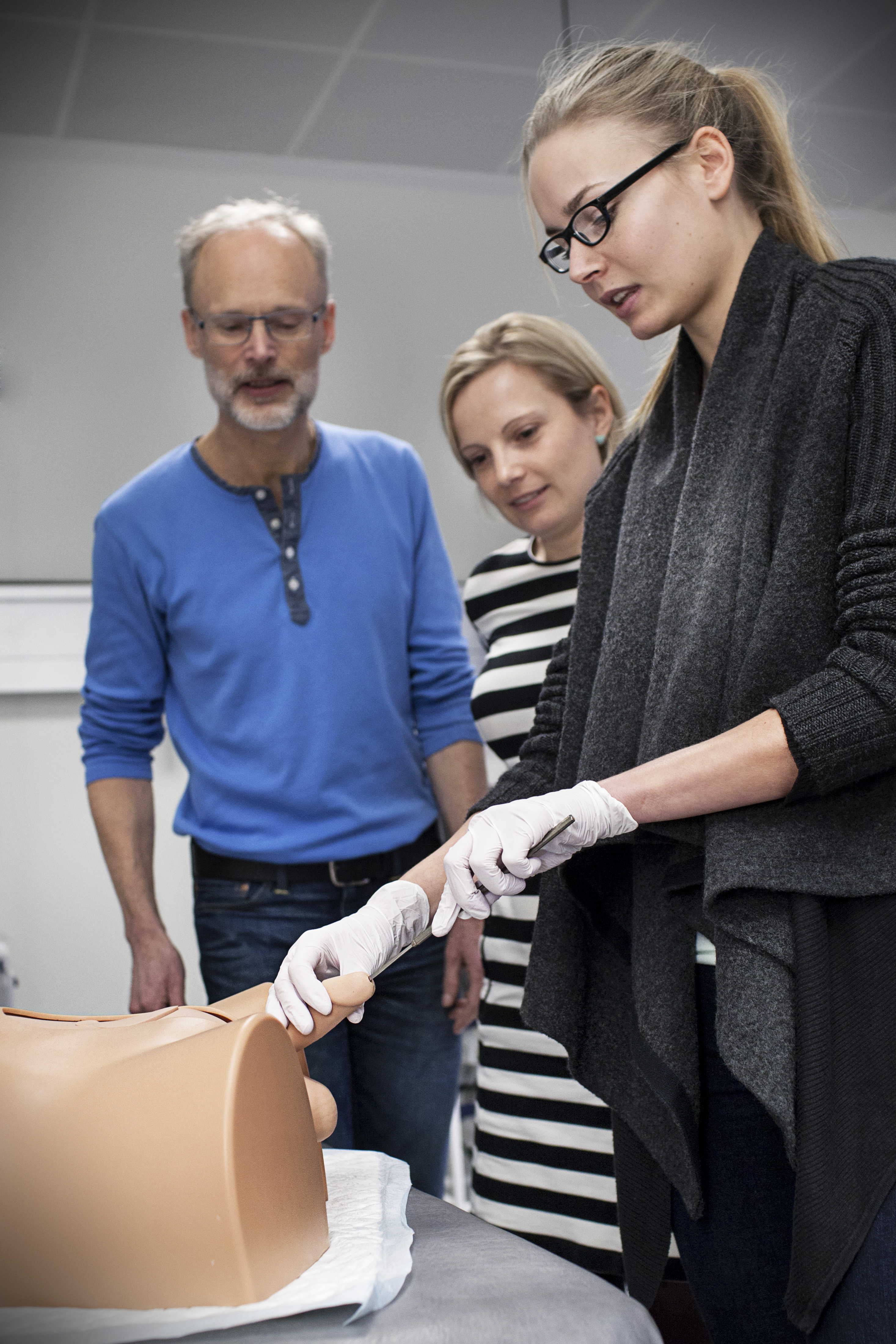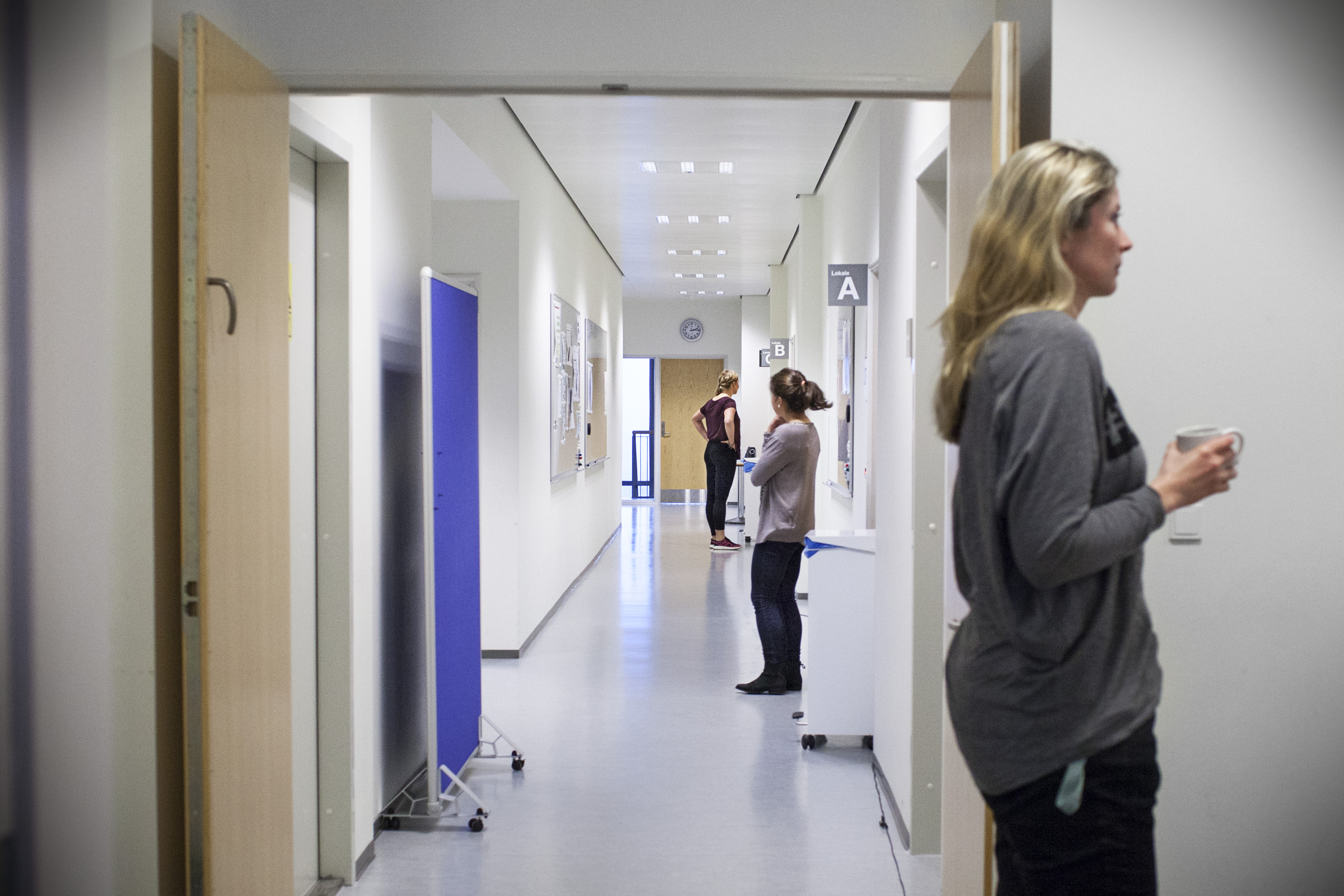A tough exam – but a good one!
A new type of examination means that 110 students of medicine in their second-last semester are now examined individually on 14 stands on the same day. The students are tested in eleven subjects, and they regard the new exam as one of the toughest in the entire degree programme – but also as one of the best.




“I’ve been studying from 8 am to 8 pm every day since the beginning of November, but I’ve also had teaching right up until the day of the exam. Just recently I’ve only been eating sandwiches or fast food, because I haven’t had the time to make a proper meal or do my laundry,” explains Jennifer Rosenkjær Hansen, an 11th-semester student of medicine.
She’s one of the 110 students taking a brand-new type of exam this January: the first time the so-called “OSCE” exams are being held at AU. The students did a multiple-choice exam yesterday. But today they’re being examined in theory and practice – not least with regard to their communicative skills.
“We test the students in a total of eleven subjects, six of which are particularly important. These subjects include children’s diseases, women’s diseases and childbirth, skin and venereal diseases, forensic medicine, social medicine, clinical genetics, X-rays and pharmacology. It’s a really wide-ranging curriculum, but then again they’ll be graduating as fully fledged doctors in the summer,” says Professor Ulla Breth Knudsen, a consultant at the Gynaecology/Obstetrics Department of Aarhus University Hospital. She is one of the people responsible for these exams. And she continues:
“It’s a good way to examine students of medicine because we generally base these exams on cases. And we also test whether they are using too many resources. In an ideal world it might be better to do three tests or screenings at the same time. But we have to remember the socio-economic situation, which is why the students have to choose the most relevant tests,” explains Knudsen.
She’s going to be involved in the exams today, alongside Kristian Krogh, who is a doctor and PhD student as well as helping to organise the new type of exam. Getting so many students through 14 different exams in the same day requires military planning, 94 examiners, and about 34 assistants, IT support staff and invigilators.
Eight minutes is a long time
A bell rings and the students of medicine hurry from one stand to the next, with red cheeks and a highly focused look in their eyes. The next part of the exam can begin. They have eight minutes on each stand to show what they can do. This kind of exam might seem pretty short and superficial.
“But eight minutes is a long time if you don’t know much about what you’re talking about,” says Anders Jørgensen, one of the students doing the exam today.
“For instance, I had to fudge it a bit on the stand for obstetrics.”
This is despite the fact that he’s been studying either on his own or with his study group since mid-October. He didn’t even have a Christmas holiday, apart from a single day off on Christmas Eve. But the students don’t have any time to cry over spilt milk. The questions and tasks they are set vary so much from one stand to the next that they need to adjust immediately and keep the adrenalin flowing, explains Jørgensen.
A plastic penis and the police
On one of the stands the students have to use a plastic penis to demonstrate their ability to test for venereal diseases and produce a diagnosis based on a microscope image.
Jennifer Rosenkjær Hansen disinfects her hands and puts on rubber gloves.
“This is going to be a bit unpleasant,” she says. It certainly looks unpleasant. She reaches for an instrument that looks precisely like a screwdriver and inserts it carefully but firmly into the urinary tract of the fake penis.
On another stand the students are tested on their knowledge of forensic medicine. What happens is that they receive a call from the examiner:
“Good morning. I’m calling from the Mid and West Jutland Police.”
They have just been shown a photo of someone who has sustained physical injuries following an attack. They have to describe the injuries, say what they think caused them, and explain what they plan to do next. Will they give top priority to gaining evidence from the patient to help the police in their inquiries, or will they operate?
“That was a bit of a dilemma, but I chose to operate first. I hope that was the right answer ...” explains Anders Jørgensen.
Once the students have been round to all the stands, they are isolated in a room nearby so they can’t talk to the students who are still waiting for their turn.
One of the toughest exams
Once it’s all over, both Anders Jørgensen and Jennifer Rosenkjær Hansen give the thumbs up to the new type of exam.
“It’s one of the toughest exams for students of medicine apart from the anatomy and physiology exam, but it’s a nicer kind of exam. It’s a good idea to use a more modern type of exam which resembles the way we will have to work as doctors,” says Hansen. And she continues:
“The new exam has both advantages and disadvantages. You don’t delve quite so deeply into individual topics because you can’t keep it all in your head at the same time. So I think the academic level might be a bit lower than in previous years. On the other hand, this exam is more holistic in its approach, which helps you to see the links between different subjects because you have to revise them all at the same time.”
Anders Jørgensen adds:
“It’s an extremely relevant type of exam which is worth keeping. It’s tough, but it’s a good way to test people and it doesn’t demand a ridiculous amount of detailed knowledge.”
New exam raises the level of teaching
A number of examiners also express their satisfaction with the new type of exam – including Ida Vogel, who is a clinical associate professor and teacher at the Department of Clinical Medicine, as well as being senior consultant at the Clinical Genetics Department of Aarhus University Hospital.
“This is the first time we’ve examined students in genetics. In the past they only had to attend the teaching to pass the course. And you can definitely sense a difference in level among the students. It’s higher than it used to be. The fact that they now have to do an exam in this subject also has an impact on the teaching. Lots of students used to just sit in on the lectures without taking much interest – and that really drains your energy away.”
Ulla Breth Knudsen evaluated the new exam with both students and examiners all day long.
“We had a few teething difficulties connected with the use of the iPads used by the examiners to assess the students, but by 11.30 everything was running smoothly. It’s a new way to do exams; but people seem to like it, and in general both the students and the examiners have tackled it all with great success.”
Time to wash some clothes and do some cleaning
Anders Jørgensen and Jennifer Rosenkjær Hansen now have one final small exam to get through. They can then take a well-earned rest before the final semester starts in February. So how do you celebrate the completion of such a huge exam? Jørgensen decided to spring clean his student flat, while Hansen went to town with some of her friends.
“And I look forward to having the time to watch TV, do some laundry and make some proper food.”
New type of exam for students of medicine
The new type of exam has been introduced on the second-last semester of the Master’s degree programme in medicine.
It consists of a multiple-choice exam on an iPad followed by the so-called “OSCE” exam. OSCE stands for Objective Structured Clinical Examination. Students are tested in various medical cases on a total of 14 stands. They have eight minutes on each stand, and two minutes to get to the next stand. During the day the examiners on the stands assess the performance of the students based on a system of points.
The multiple-choice exam and OSCE exam count for 50 per cent of the overall evaluation each.
Translated by Nicholas Wrigley

